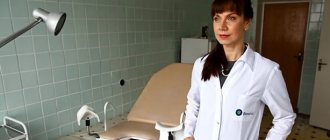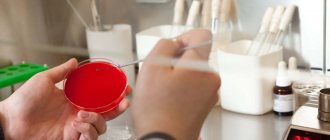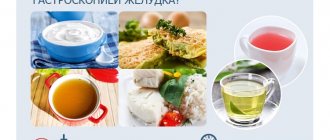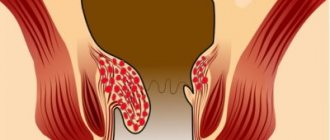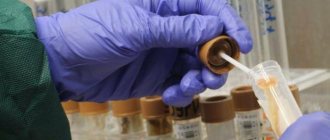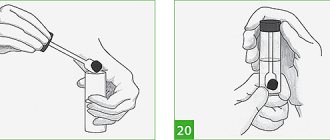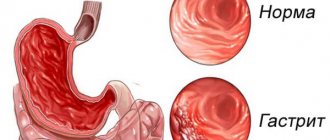When is diagnostics required?
It happens that nothing bothers a person, and there are no noticeable changes in the functioning of the digestive canal.
Why take such an analysis anyway? A fecal occult blood test can detect some serious pathologies in the early stages. For example, for many years in a row there may be minor bleeding in the human body that does not make itself felt. The patient has no pain or deterioration in health.
At the same time, such disorders may indicate pathologies in the following organs:
- rectum;
- stomach;
- spleen;
- intestines;
- liver.
Hidden blood in the stool can be detected with hemorrhoids and thrombophlebitis of large internal veins. All this requires careful diagnosis and a sensitive approach on the part of the attending physician.
In some cases, the result of the analysis can be questioned. Most often this is due to the fact that the biomaterial for the study was not collected in accordance with the rules.
Blood may be detected in the following cases:
- blood from menstrual fluid has entered the stool;
- due to nosebleeds, it entered the esophagus and then into excrement;
- From the cracked lips, blood fragments entered the body.
In order for the analysis result to be reliable, it is important to properly prepare for its delivery. This is not only about how to properly collect feces for research, but also what can be eaten for reliable results.
If you have been receiving any antibiotic treatment, it should be stopped at least two weeks before the test. If this is not possible, the delivery of biomaterials should be postponed. Two weeks should pass between the last dose of antibiotics and the test.
You should stop taking the following medications for about a week:
- vitamins;
- aspirin;
- any blood thinners;
- preparations containing iron in any form;
- non-steroidal anti-inflammatory drugs.
During this period before the planned date, it is important to remove the following nutritional components from your diet:
- meat products;
- fish;
- liver;
- apples;
- cucumbers;
- green onions;
- some types of beans;
- spinach;
- Bell pepper;
- cauliflower.
Two days before analysis
In no case should biomaterial be taken for analysis less than two days after the X-ray examination. This may affect the results.
You should also not take activated carbon and bismuth. These drugs change the color of stool, making diagnosis difficult. You should refrain from using suppositories, as this may change the chemical composition of stool.
It is not recommended to take such a test during menstruation. Blood from the vagina can penetrate the test material and distort the conclusions. If an occult blood test needs to be carried out urgently, then it is necessary to use a swab.
How to properly take a stool test for coprogram
- periodically recurring pain in the abdominal area, as well as in both hypochondriums;
- discomfort and pain during bowel movements or after the act itself;
- complete or partial loss of appetite, sudden decrease in body weight of unknown cause;
- unpleasant taste in the mouth, heartburn, belching, nausea, vomiting;
- sensation of a foreign object in the rectum;
- increase in body temperature of unknown nature;
- any intestinal dysfunction - constipation, diarrhea, decrease or increase in the amount of feces, changes in their color, smell, consistency, the presence of suspicious components (blood, foam, mucus, pus, parasites and their eggs).
In addition to alarming symptoms, there are several other circumstances that cause a single or repeated analysis. These include:
- Diagnosed gastrointestinal diseases: intestinal polyposis, esophageal varicose veins, diverticulosis, Crohn's disease, ulcerative colitis (UC), helminthiasis and a fairly large list. The procedure can be used both to determine the stage of pathology and to monitor ongoing therapy.
- Alarming results of previously conducted other diagnostics, for example, a clinical blood test or biochemical test, coprogram, etc.
- Prevention of the development of cancerous tumors in the intestines in people over 40–50 years of age and in patients with a family history.
This procedure, like clinical stool analysis, as well as many other techniques, requires preliminary preparation. Moreover, the requirements are several times greater compared to some tests, but they cannot be neglected, since otherwise the result will not be reliable, and the biomaterial will have to be taken again.
Firstly, you should delay collecting biomaterial until stomatitis, periodontal disease, dyspepsia, hematuria, nosebleeds, and exacerbation of hemorrhoids are eliminated (if any). Preparation also means waiting 3-4 days after diagnostic procedures in the intestines (sigmoidoscopy, colonoscopy), anal sex, and for women, the end of menstruation. All of these circumstances are highly likely to distort the results of the study.
Secondly, a week before the test, you should temporarily stop taking medications that can change the composition of stool. Specifically, NSAIDs (aspirin, naproxen, ibuprofen), anticoagulants, ascorbic acid, barbiturates, agents that stimulate peristalsis, iron-containing medications and dietary supplements.
Important! If the patient takes any medications on an ongoing basis and does not know whether their use can affect the test results, then it is imperative to consult with your doctor in advance.
Thirdly, 3-4 days before the examination you need to start following a special diet. The fact is that diagnosis of occult blood is almost always performed using samples that are highly sensitive to certain food components. That is why before analysis you need to give up all types of meat, fish, poultry and offal. This will allow laboratory diagnostic specialists to detect only the blood of the person being examined.
In addition, you should refrain from eating a certain list of fruits, berries, vegetables and legumes that contain a lot of iron or vitamin C. You should also not eat foods that increase intestinal muscle motility - cabbage, apples, carrots, tomatoes, celery, beets, oranges, nuts, spinach, cranberries, soy, lentils and beans.
Rules for preparing for the examination
Fourth, 12 hours before the procedure, stop brushing your teeth and eating hard foods, which can injure the gums and thereby cause blood to enter the gastrointestinal tract. It is very important not to forget to follow all the rules and prepare properly for the examination, then you can say with confidence that the result obtained can be trusted.
During the diet, before testing feces for occult blood, you must avoid consuming apples, white beans, cucumbers, spinach, cauliflower, horseradish, meat and fish products. Tomatoes, bell peppers and green vegetables are also prohibited.
Patients are allowed to consume potatoes, cereals, and dairy products. You need to eat in small portions without overeating. It is important to avoid frying; Instead, food is boiled, stewed or baked.
The technique during the diet is aimed at preparing the body for submitting stool for analysis. It is cleansed of harmful substances, components that can negatively affect the result of the procedure are removed.
This diet normalizes digestion and reduces the load on its organs. By giving up fatty foods that are difficult to digest, discomfort and a feeling of heaviness in the stomach will disappear.
The person's condition will improve significantly. Excluding difficult-to-digest, high-calorie foods from the menu can lead to a decrease in body fat, and a person will lose a little weight.
This study will detect bleeding from the stomach, any part of the intestine and promptly notice, for example, hemorrhagic anemia caused by ulcerative intestinal lesions.
In some conditions, a fecal occult blood test is not performed: menstrual bleeding, blood in the urine, bleeding hemorrhoids, periodontal disease.
Fecal occult blood testing is performed frequently. The doctor sends for research in the following cases:
- abdominal pain of unknown cause;
- prolonged feeling of nausea in the absence of other signs of damage to the gastrointestinal tract;
- vomiting, recurring periodically;
- diarrhea for a long time;
- detected helminth;
- Crohn's disease (inflammatory process in the gastrointestinal tract);
- ulcers in the stomach or intestines;
- presence of intestinal cancer in close relatives of the patient.
To accurately reflect the processes occurring in the digestive system, it is necessary to carefully prepare for a stool test.
- You need to start preparing about a week before the test. The attending physician should explain to the patient which medications may affect the results. And after the doctor’s permission, you can stop taking, for example, drugs that change the color of stool or laxatives.
- At least 3 days before the analysis, it is necessary to review the menu. It is necessary to exclude meat, fish, and offal (liver), as they contain a lot of iron and this can distort the test result.
- When preparing for any stool examination, it is necessary to avoid foods that color stool (beets, carrots, tomatoes).
- Bowel movements should occur independently: without laxatives or enemas.
- 3 days before the analysis, you must refuse to perform diagnostic procedures (for example, x-ray examination) or carry them out later after examining the stool.
- You cannot donate stool for examination during menstrual bleeding.
- It is forbidden to brush your teeth, so that in case of bleeding from the gums and blood entering the gastrointestinal tract, there is no false positive result.
- Before analysis, it is recommended to avoid penetration into the rectum, which can cause damage to the mucous membrane.
Stool collection
Analysis transcript
Interpretation for adults and children is carried out only by a doctor who knows how to interpret tests. A specialist will figure out what the analysis obtained by one or another research method (or several) shows.
Important! Nasal bleeding (when blood enters the esophagus) and dental diseases, accompanied by inflammation and bleeding of the gums, can affect the readings.
Norm
In a healthy person, tests do not detect hemoglobin particles in the stool, although objectively about 2 ml of blood enters the gastrointestinal tract per day.
False results
Test results are defined as false positive and false negative if they do not correspond to the actual state of the gastrointestinal tract. A false positive test may occur if the testing rules are not followed (eating the wrong food, gum injury, etc.). In these cases, the sample indicates blood particles in the real absence of pathological processes in the intestines and stomach. A false negative result occurs if the disease causes irregular bleeding. An analysis taken during the period of remission will not show traces of hemoglobin.
The meaning of positive and negative results
If the test result is negative, this means that no significant volume of blood was detected in the sample. With a positive analysis, a pathological process is present. This could be an inflammatory disease, tumor, infection, mucosal injury, hemorrhoids, cracks, helminthic infestation.
It is tested for hidden blood, which is not detected by conventional microscopic examination. It helps to identify diseases in any part of the stomach or intestines, which are accompanied by a violation of the integrity of the mucous membrane. So, normally, in a healthy person, a stool test for occult blood should be negative, and if it is positive, then it is necessary to conduct a more detailed diagnosis of the health condition.
Indeed, as a result of this study, it is possible to identify small chronic bleedings that do not in any way affect a person’s well-being. Using this analysis, it is possible, for example, to diagnose rectal cancer at an asymptomatic stage: even in the absence of pain and other pronounced signs of the disease, it causes the appearance of slightly bleeding tumors. It can also be positive for occult blood in case of ulcers in the gastrointestinal tract, intestinal tuberculosis, cirrhosis of the liver, thrombophlebitis of the splenic vein, typhoid fever, hemorrhoids, and even when infected with a certain type of helminth.
Such a wide list of possible reasons that a stool test for occult blood is positive requires a more thorough examination of the patient to establish an accurate diagnosis. It should also be noted that a positive test result can also be a result of blood entering the esophagus during nosebleeds, cracked lips, or even when menstrual fluid is accidentally introduced into the test material.
Before testing for occult blood, you need to prepare. 3 days before the expected date of the study, the patient must exclude from the diet any meat, liver, fish, a number of fruits and vegetables, which contain large amounts of peroxidase, catalase and, of course, iron. These include cucumbers, cauliflower, horseradish, apples, spinach, white beans, green onions, and bell peppers. In addition, a week before the study, it is prohibited to take drugs C, acetylsalicylic acid (including tablets intended to thin the blood), and non-steroidal anti-inflammatory drugs. If the patient has undergone an X-ray examination of the intestines or stomach, the analysis is given no earlier than two days later. It is not done while taking antibiotics. After all, all these products, drugs and procedures can affect the results of the study.
If you don’t know what to wear for a stool test, go to the nearest pharmacy where you can buy a special container with a spoon, which is used to collect material for the study. You should not try to fill the entire jar; the laboratory needs no more than 1/3 of its volume. By the way, these same containers are purchased if you need to undergo a biochemical analysis to test for enterobiasis or helminth eggs. The material must be collected on the same day on which it will be submitted to the laboratory. If storage is necessary, it is better to leave the feces in a cold place, at a temperature no higher than 6 o C.
Stool examination provides information about the patient's health. This method helps to identify various diseases and disorders in the body.
If the patient is scheduled to donate stool, a few days before the procedure you should go on a diet - this will allow you to get reliable results from the analysis.
Why is occult blood dangerous?
Blood impurities, invisible to the naked eye, can be no less dangerous than clearly diagnosed bleeding. One such disease is colorectal cancer, a malignant neoplasm that affects the colon and rectum.
In the early stages, bleeding from the resulting tumor may be insignificant, so it is difficult to detect it without testing. In addition, the rest of the symptoms at the onset of the disease are also not clearly expressed, which significantly complicates the diagnosis.
Attention! For people over 45–50 years of age who have a family history of colorectal cancer, annual stool occult blood testing is recommended to increase the chances of detecting the disease in its early stages.
Gastrointestinal pathologies such as ulcerative colitis, polyposis, diverticulosis, etc. are no less dangerous. They may also not bother the patient for a long time with noticeably pronounced manifestations, and he will think that temporary ailments are associated with banal reasons, for example, with poor nutrition.
But at this time, healthy tissues are gradually destroyed, and minor impurities of hemoglobin or modified red blood cells enter the feces, which cannot be detected without special devices.
Basic principles of the diet before donating stool for occult blood
- It is necessary to exclude meat, fish, eggs, legumes and green vegetables from the diet.
- Portions should be small so that a person does not feel heavy in the stomach.
- During the diet, you should not take antibiotics or laxatives.
- It is allowed to consume dairy products, mashed potatoes, and oatmeal decoction.
- Instead of coffee and black tea, you should drink water, dried fruit compotes, and fresh juices.
Dishes are prepared by boiling, stewing, baking or steaming. Frying is strictly prohibited: such food can negatively affect the analysis results. The daily calorie content should not exceed 2200 kcal, the weight of the dishes should be 2.2-2.5 kg.
You need to eat food every two hours, but in small portions. There are 5-6 meals per day. The program lasts from 3 to 5 days - this is enough to prepare the body for the test.
Nutrition in preparation for diagnosis
In this case, it is necessary to stop consuming apples, white beans, cucumbers, spinach, cauliflower, horseradish, meat and fish products. Tomatoes, bell peppers and green vegetables are also prohibited.
Alcohol, sweet carbonated water, coffee, and black tea are prohibited from drinks. Pure still water is allowed.
Patients are allowed to consume potatoes, cereals, and dairy products. You need to eat in small portions without overeating. It is important to avoid frying; instead, food is boiled, stewed or baked
.
What does occult blood mean?
Normally, a healthy person may have a small amount of blood in the stool, but not more than 2 mg of hemoglobin per 1 g of feces. At this concentration, it turns out that about 2 ml of blood is released from the body per day, and this does not cause any harm.
In the case when the bleeding intensifies, the color of the stool changes, and its shade can indicate the localization of the pathology, that is, the darker it is, the higher the problem is located in the gastrointestinal tract. For example, with a bleeding stomach or duodenal ulcer, the feces become black and tarry (melena).
If the cause is hidden in an exacerbation of ulcerative enterocolitis, then the feces will be burgundy. With bleeding hemorrhoids, polyps and malignant tumors of the rectum, streaks and drops of blood will be present in the stool. Such symptoms should in no case be ignored, and the sick person should visit a specialist as soon as possible and undergo all the necessary tests.
Hidden blood in feces is hemoglobin or red blood cells, which are not detected either by visual or microscopic examination of stool. It is shown only by the described analysis, and a positive result confirms the suspicion of hidden bleeding of the gastrointestinal tract, which requires immediate further examination and the appointment of appropriate therapy.
Intestinal damage due to a colorectal tumor may be accompanied by the appearance of occult blood in a stool test
Stool examination
A large-scale task is performed by blood tests in relation to hidden bleeding in different parts of the gastrointestinal tract. To carry out the test, a special chemical reagent is used that reacts to the minimum level of hemoglobin, including in animal meat eaten the day before. Heavy bleeding is visible to the naked eye, because the color of the bowel movement changes radically. Scarlet blood characterizes the pathology of the colon or rectum. A tarry, black consistency indicates a problem in the esophagus, stomach or small intestine.
In smaller-scale disorders of the gastrointestinal mucosa, the color and consistency of the collected material does not change. The presence of red blood cells is determined through microscopic examination. To diagnose bleeding, screening tests are used to help identify asymptomatic diseases. Most clinics use a sensitive guaiac test. Its reactions to detect pathology work due to the property of hemoglobin to accelerate all oxidative processes.
During the analysis, feces are applied to special filtered paper, then guaiac reagent, hydrogen peroxide, and acetic acid are applied. If the hemoglobin concentration is less than 2 mg per 1 mg of stool, then the test result is negative. When the reaction to occult blood in the stool is positive, even small metastatic and primary tumors can cause it, so the blood sensitivity test is widely used to detect colon cancer.
Positive test for occult blood in stool
- Peptic ulcer;
- Gastroenteritis;
- Diverticula;
- Anal fissures;
- Tumors;
- Intestinal infections;
- Hemorrhoids;
- Ulcerative colitis.
The causes of blood in the stool may have various additional symptoms that suggest damage to the digestive system:
- Acute or chronic pain in the lower abdomen;
- Diarrhea syndrome, persistent constipation;
- Loss of body weight without obvious reasons (with a normal diet and level of physical activity);
- Vomiting and nausea;
- Decreased appetite.
Stool analysis is one of the diagnostic methods used to detect gastrointestinal pathologies.
The level of blood in the stool is minimal - in a person with normal digestion, red blood cells are not detected in the stool.
In many pathologies, the damage to the mucous membrane is minor, so small amounts of blood cells are found in the stool. However, even mild intestinal bleeding has an adverse effect on the body and greatly worsens the patient’s condition.
Therefore, it is necessary to test feces for occult blood if an erosive process is detected in the organs of the digestive system. Of particular importance is the analysis of feces for occult blood before treatment of hemorrhoids, which is often accompanied by damage to the vessels of the rectum and the release of red blood cells in the feces.
Fecal occult blood testing can be done using several methods:
- Gregersen reaction. The analysis involves a chemical determination of the content of hemoglobin residues in the stool. The sensitivity of fecal occult blood analysis by this method is relatively low, since the reagents give positive results not only for human blood, but also for hemoglobin fragments of animals, which may be contained in meat products consumed by the patient.
- Immunochemical analysis. Detection of blood in stool using immunochemical diagnostics involves the use of special antigens; a positive reaction when used only occurs on the content of human hemoglobin. Therefore, this technique is more convenient and specific. The disadvantage of the immunochemical stool occult blood test is its limited use - a stool test can detect bleeding only in the area of the colon and rectum; defects of the stomach and small intestine are not detected with it.
Patient preparation includes changes in the patient's lifestyle and diet. It is necessary to follow a number of recommendations that contribute to the normalization of the gastrointestinal tract. Against the background of violations of established rules, false positive or false negative tests may occur. Preparation for a stool occult blood test ensures the reliability of the test result.
Before the test, a person should be informed about the dietary habits when conducting an occult blood test: what can be eaten and how to prepare for diagnosis. The diet completely prohibits dishes containing digested hemoglobin and proteins containing iron. These products include:
- Meat, liver;
- Fish;
- Greenery;
- Vegetables (spinach, tomatoes, legumes, zucchini);
- Nuts;
- Seasonings (mustard, horseradish);
- Fruits (apples, pineapples, bananas, plums).
The diet completely prohibits dishes containing digested hemoglobin and proteins containing iron.
14 days before the occult blood test, you need to limit the use of certain medications:
- Nonsteroidal drugs (ibuprofen, diclofenac, aspirin);
- Laxatives.
This limitation is due to the fact that, against the background of restrictions on drugs of these groups, bleeding of the intestinal mucosa may occur.
Invasive procedures are prohibited (colonoscopy, irrigography cannot be done), as there is a risk of injury to the walls of the digestive organs.
7 days before the patient undergoes a stool test, the use of rectal suppositories is completely excluded. It is forbidden to do enemas, because these manipulations can lead to blood in the stool.
Within 3-4 days the patient begins to adhere to a special diet. The diet must be composed of mucous porridges, potatoes, eggs, and dairy products. You can add butter to porridge, preferably butter.
If possible, limit the use of the following medications:
- Iron preparations;
- Bismuth salts;
- Products containing barium salts;
- Ascorbic acid.
It is not recommended to visit the dentist while preparing for the procedure, as blood may be released in the oral cavity during manipulation. When it enters the intestines and is mixed with food, residual amounts of red blood cells are detected in the feces. They are mistaken for a symptom of intestinal damage, which leads to a false positive test result.
Feces are collected onto a special paddle after bowel movement. If the material is collected correctly, then the likelihood of a false result is minimal.
Preparation for stool occult blood test in patients has its own characteristics. It is prohibited to carry out diagnostics during menstrual flow, as well as in the next 3 days. This is explained by the fact that if the sample is not taken carefully enough, particles of menstrual fluid will often penetrate into the stool sample, which will lead to a false-positive test.
The patient is prescribed a general analysis of blood, stool, and urine. If a specialist suspects that a pathology of the gastrointestinal tract is developing, leading to internal bleeding, then a test is prescribed to detect it.
With pathology of the mucous membrane of the esophagus, stomach, and duodenum, stool becomes almost black or dark red due to contact of blood with enzymes. If the integrity of the intestines is compromised, the stool becomes bright red. If there is significant bleeding, the patient needs emergency medical attention.
Bleeding is not always constant; ulcers and inflammations bleed periodically. With little involvement of blood vessels in the pathological process, the color of the stool and its consistency do not change.
If no blood is detected during coprogram, and the doctor suspects hidden bleeding, then the patient must undergo another test. The reaction to occult blood in the stool is positive, but bleeding is not necessarily present, that is, the result is false positive.
When is the test taken?
An occult blood test is recommended if a patient has the following symptoms:
- abdominal pain that is constant or occurs periodically;
- nausea and vomiting;
- heartburn;
- bowel movements differ in consistency from the norm (mushy);
- false urge to defecate;
- frequent constipation;
- diarrhea;
- weight loss, lack of appetite;
- hyperthermia.
If the bleeding is not severe, then it is impossible to notice blood in the stool without special reagents
The study allows you to confirm the diagnosis. It is also carried out if the patient has gastrointestinal diseases using other diagnostic methods. The results will help the specialist understand the extent of damage to the mucosa and determine the severity of the disease, and a repeat test will show how effective the prescribed therapy is.
How to get tested
A therapist, oncologist, surgeon, or gastroenterologist can prescribe the test. Before taking the test, preliminary preparation is required. Doctors give the following recommendations. 72 hours before the test, exclude iron-containing foods from the menu, as well as tomatoes and green vegetables and fruits. You should not eat meat or fish, as they contain hemoglobin.
For a week, stop taking medications such as aspirin, laxatives, iron tablets, non-steroidal anti-inflammatory drugs. If it is not possible to stop drug therapy, then you need to inform your doctor about the medications you are taking.
Do not consume foods that change the color of stool. The collection of material should be carried out before diagnostic manipulations in the digestive tract. It is not recommended to do an enema or take laxatives to speed up the collection of a sample for analysis.
Biochemical analysis of stool for dysbacteriosis
If the subject has periodontal disease, in which there is severe bleeding of the gums, then the day before collecting stool, it is not recommended to brush your teeth, since blood that gets into the stomach can give a positive result.
You need to take material from three different sides of the stool. An unreliable answer is likely if water or urine gets into the sample. In order to eliminate this, it is recommended to lay oilcloth on the toilet. The test sample must be placed in a plastic container (can be purchased at a pharmacy) and brought to the laboratory within the next 2-3 hours.
The test for occult blood is positive if a pathology develops in which a certain amount of blood enters the lumen of the stomach or intestines. That is, there is a disease characterized by inflammation of the mucous membrane and its perforation.
A positive answer indicates the development of the following pathologies:
- colorectal cancer;
- tumor;
- peptic ulcer;
- ulcerative colitis;
- intestinal tuberculosis;
- parasites that injure the intestinal mucosa;
- changes in the veins of the esophagus due to cirrhosis or thrombophlebitis of the splenic vein;
- erosive esophagitis;
- Rendu-Osler disease;
- haemorrhoids.
In some cases, the tumor manifests itself only by the release of a small volume of blood in the stool
Young children may also see blood in their stool. Quite often this is due to the child’s intolerance to cow’s milk. If the baby is breastfed, then even the mother's consumption of milk, butter, or sour cream can cause bleeding.
If a child has lactose intolerance, then you need to carefully select an artificial formula.
Bleeding in a baby can be caused by dysbacteriosis, amoebiasis, colitis, and dysentery. One of the reasons for the presence of blood in the stool is anal fissures, which arise as a result of the passage of too hard stool. This happens if the child does not drink enough fluids.
Tumors in the colon bleed slightly but constantly from the moment they form. If the bleeding has become profuse, it will also be detected during coprogram. An occult blood test helps detect cancer symptoms early, which increases the chances of a favorable outcome of the disease. A positive test for occult blood will be due to bleeding from the nose or gums or throat.
During the study, chemical substances are used that, upon contact with a red blood cell, change color due to oxidation. Gregersen's method allows you to see even small amounts of hemoglobin. Benzidine turns iron blue.
Pros and cons - diet before donating stool for occult blood
- High efficiency.
- Beneficial effect on the digestive organs.
- No need to starve.
- Help in obtaining reliable analysis results.
However, each diet has not only pros, but also cons: the patient is allowed to consume very few foods. They can get boring after a few days.
Most familiar dishes are excluded from the menu. The diet is not easy for all patients, but it is effective, so such restrictions are understandable.
This technique has no contraindications, but in the presence of chronic diseases, the doctor can adjust the diet, add or exclude certain foods. It is necessary to consult a doctor.
Sample diet menu before donating stool for occult blood
| Diet day | First breakfast | Lunch | Dinner | Afternoon snack | Dinner |
| First | Rice porridge | Compote | Mashed potatoes | Kefir | Milk soup |
| Second | Buckwheat porridge | 50 ml milk | Vegetable stew | Compote | Potato casserole |
| Third | Cottage cheese | Kissel | Boiled rice | Peach | Low-fat yogurt |
Usually the diet is followed for three days. For breakfast it is better to eat porridge or low-fat cottage cheese. For lunch, mashed potatoes, non-green vegetable stew, or boiled rice are suitable.
For dinner, fruit salads, low-fat yogurt or cottage cheese are acceptable.
When creating a menu, you should remember the lists of prohibited and permitted products.
The permitted products are very few in number and are included in the diet. The focus is on low-fat dairy products, cereals and non-green vegetables.
Algorithm for collecting and donating feces
After all preparatory requirements have been met, you can proceed to collecting biomaterial. Before defecation, it is necessary to carry out hygiene procedures for the genital area and anus using soap. When finished, rinse these organs well and wipe dry.
You should empty your bowels into a special clean container, which is prepared in advance. To obtain a sample, bowel movements must occur naturally, without the aid of laxatives or enemas. You cannot collect biomaterial from the toilet, and in children, feces are taken from a thoroughly washed potty or oilcloth or diaper (not from diapers).
Reference! It is best to collect and transport the sample in specially designed sterile containers, equipped with a spoon for convenience and having an airtight lid. They can be purchased inexpensively at any pharmacy.
If it is not possible to purchase a container, then you can use any glass container with a lid, which must be thoroughly washed and sterilized. A sample is taken from several areas of feces so that the diagnostic picture is as informative as possible. In total, you need to collect 2-3 teaspoons of biomaterial.
If possible, it is best to take the container with the sample to the laboratory immediately after collection, but it can also be stored in the refrigerator for up to 12 hours. The latter action allows you to not be tied to a clearly specified time, which is convenient when examining small children whose stool is unpredictable, as well as patients who have bowel movements before going to bed at night.
Do not think that if the feces themselves contain a large number of bacteria, then hygiene is not so important. Small fragments of urine or chemical components from linens and clothing may interfere with the accuracy of the results.
First you need to urinate and wash well with warm water and soap. Then you need to defecate in a clean, dry container. You should not do this in the toilet, as there may be a large number of microbes there, the entry of which will distort the results of the analysis. A vessel or pot is suitable for these purposes. If these items are not in the house, you can use a clean bag or film, from which you can then take part of the sample.
Pharmacies have a solution to this problem. If you do not know what to bring the biomaterial to the laboratory in, purchase special containers. You don't have to fill it out completely. The third part is quite enough for the study.
How to assemble a chair correctly?
The collection of the material necessary for analysis - feces - must be carried out in compliance with certain nuances. This also affects the quality of the analysis result.
The most important thing is that bowel movements should be spontaneous. It is contraindicated to push and make efforts to speed up the emptying process. Moreover, the use of laxatives in any form, both medicinal and traditional, is contraindicated.
Study material is collected after at least three consecutive bowel movements.
It is important to take into account that feces are collected from various parts of the feces. Do not allow urine and feces to mix.
It is best to collect the stool sample in a special plastic container, which is sold with a scoop.
If possible, collected stool should be delivered to the laboratory for analysis no later than three hours later. It should be stored in the refrigerator at a temperature of four to six degrees.
What should not be consumed during the diet before testing for occult blood?
- Dairy products - milk, kefir, low-fat cottage cheese.
- Porridge - rice, buckwheat.
- Vegetables - potatoes, beets, carrots.
- Fruits - peaches, persimmons.
- Drinks - jelly, compote, berry juice.
It is allowed to add a little butter to dishes. During lunch or dinner, you can eat a slice of bread. The main thing is not to eat buns and flour products, they are prohibited. You can add a little sugar to tea, but you cannot eat the sweets themselves.
Compotes made from dried fruits have a beneficial effect on the patient's condition. They are consumed throughout the day. This is a great addition to lunch or dinner or snack.
- Vegetables and fruits are green.
- Meat and fish.
- Seafood.
- Nuts.
- Legumes.
- Dairy products - fermented baked milk, sour cream, yogurt.
- Drinks - alcohol, sweet carbonated drinks, coffee.
It is necessary to give up not only the food mentioned above, but also spices, flavorings, and sweeteners. Smoked meats, semi-finished products, and salted foods are also prohibited.
For the results to be reliable, you need to give up cereals such as barley, millet, and wheat. They may negatively affect the diagnosis.
Recommendations from nutritionists - diet before donating stool for occult blood
During the diet, before donating stool for occult blood, experts advise strictly adhering to the menu and not resorting to prohibited foods. You can't go hungry or overeat. You need to eat every two to three hours, avoiding a feeling of heaviness in the stomach.
If the patient does not have kidney problems, he should drink 1.5 liters of water per day. This will help prepare the body for the procedure.
If a person takes any medications, they are abandoned during the diet. They may affect the result of the analysis.
Intense sports training is also not recommended; walking in the fresh air is acceptable.
Stool coprogram: how to pass it correctly
Laboratory diagnostics are usually carried out in the morning, so it is better to submit materials for research immediately. The coprogram includes several types of analyzes. Therefore, there are individual rules for each of them.
How to submit and prepare material to pass the coprogram:
If you did everything correctly, expect a response.
How many days will it take for the stool test to be ready?
In the laboratory, you can get results in 1-2 days from employees or your doctor. In some private clinics such an examination may take 5-6 days.
Fecal occult blood testing is a fairly commonly prescribed diagnostic method. Currently, it is recommended to a large number of patients, both therapeutic and surgical.
Duration of the diet before donating stool for occult blood
The duration of the diet before donating feces for occult blood is 3-5 days, no more. Typically, patients need three days to prepare for the test. The diet is stopped after the test.
To prevent the body from experiencing stress, switch to normal nutrition gradually. You can’t immediately switch to familiar dishes and products.
They are added in small quantities to the menu while continuing to consume healthy foods. This will allow you to switch to your usual diet without negative effects on the body.
Features of the analysis, reasons for positive and false results
This analysis is extremely sensitive. This can be regarded as an advantage and a disadvantage at the same time.
The disadvantage is this: the test can detect even an insignificant amount of hemoglobin, which does not always indicate the presence of bleeding.
In other words, the analysis can even reveal the hemoglobin that entered the human stomach the day before during a meal. To avoid such a mistake, you need to properly prepare for the test.
A positive test indicates the presence of an ulcer, oncology or inflammation, so even an insignificant amount of blood in the digestive organs is a cause for concern. It must be remembered: in some cases, the analysis may incorrectly reflect the picture of what is happening.
The reason for a false result may lie in improper preparation for the test and in other bleeding - from the nose and gums. In order to verify the correctness of the result obtained, stool analysis must be done twice, with an interval of several days. In the event that a test produces the same “verdict” twice, it can definitely be trusted.
Any physician who has doubts regarding the patient’s health can prescribe an occult blood test: a general practitioner, gastroenterologist, oncologist or surgeon. In this case, the doctor must warn the patient that it is necessary to properly prepare for the test. This preparation includes following certain recommendations.
Dairy version of the diet - diet before donating stool for occult blood
- During the day, a person consumes mainly dairy products, and fruits and vegetables in small quantities.
- It is allowed to consume cottage cheese, milk, kefir.
- Porridge is cooked with milk, and casseroles are made from cottage cheese.
- Adding sugar and sweet syrups to dairy products is prohibited.
You can add fruit to milk porridge and cottage cheese, but not green fruit. Peaches, pears, and persimmons are optimal. This diversifies the diet, making the diet easier for a person to tolerate.
Before donating stool for occult blood, a diet is necessary: it helps prepare for the test, cleanses the body, and has a beneficial effect on the human condition.
Knowing the principles of such nutrition, a person will do an excellent job of preparing the body for analysis, and the results will be reliable.
- Fecal occult blood test: what it shows, preparation, how to donate biomaterial
- Preparing for a blood glucose test
- Preparing for blood tests
- General blood test for vitamins and microelements
Stool analysis: preparation
The doctor must warn the patient about the scatological examination a week before the scheduled scat test. This will be enough time to prepare.
What you should absolutely not do before a stool test:
If a general stool test gives a false positive or negative result, a repeat examination is prescribed. Another type of coprogram is also used, the occult blood test. The rules for submitting material for diagnostics are slightly different.
Before testing stool for occult blood, you need to know what you can’t eat and exclude from your diet:
- green vegetables and fruits;
- meat, as well as liver;
- seafood, fish;
- eggs;
- legumes;
- alcohol;
- Coffee and tea.
It takes 14 days to prepare for a bacteriological examination for dysbacteriosis, 3 days for a coprogram, and 7 days for an occult blood test. This should also be taken into account. Do not forget that human bowel movements are an indicator of the functioning of the gastrointestinal tract and the entire digestive system as a whole.
Киски с wowyaroslavl.ru встречаются при взаимной симпатии, реальные феи проститутки Ярославль по вызову, ты будешь очарован. Вы можете быть уверены в достоверности представленных данных и легко остановите выбор на подходящей вам шлюхи. Лучшие в городе реальные феи проститутки Ярославль по вызову, желанные и восхитительные, они такие грациозные и молоденькие, что возбуждение неизбежно. Не отказывай себе в удовольствии.
